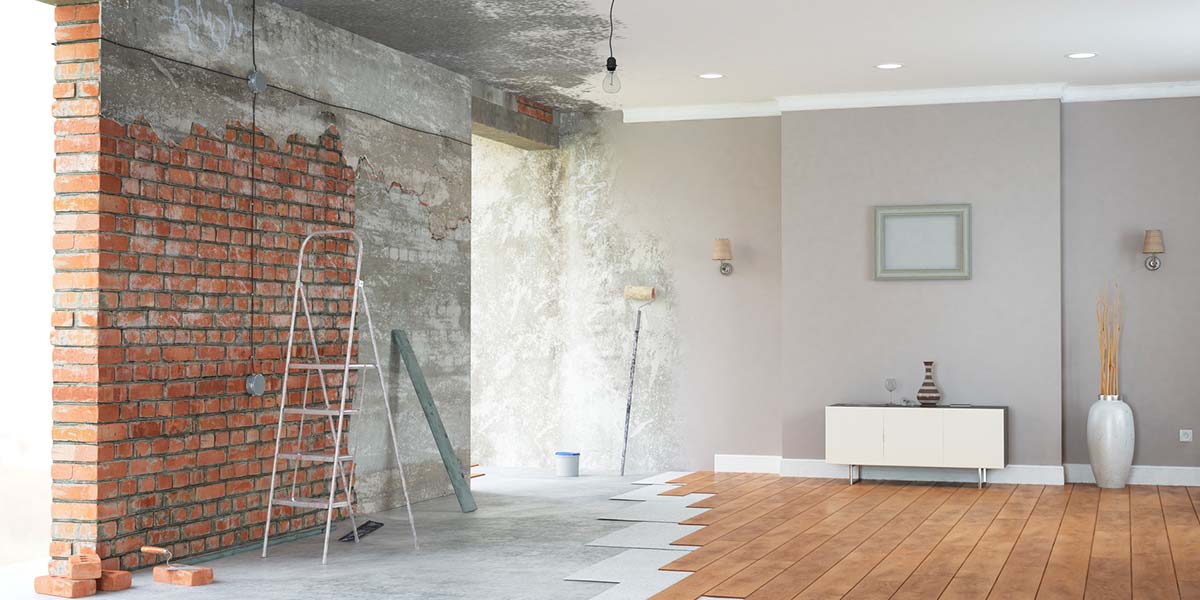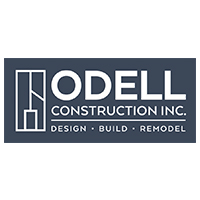
Planning your home remodel, whether by yourself or with help from a contractor, is no small undertaking, but the end result can be extremely rewarding. To save you time, money and stress, it’s best to go in with a renovation plan. This will help you strategize and prepare for each step of the project, from creating your vision to getting the proper permits, to avoid hiccups in the timeline and your budget. Use our guide and house renovation costs spreadsheet to prepare for the job ahead.
If you want to tackle a renovation, but don’t where to start, use our in-depth process to complete the project with confidence. Go through the following steps to ensure you don’t miss any important planning stages and allot the right amount of time and money for your remodel.

When to Start: 6-12 months before the project
Why are you taking on this renovation? It’s important to know your end goal as you begin planning the job ahead. Remodeling is an investment and you want to make sure it pays off. Some common reasons for remodeling include:
As you’re thinking about the upcoming renovation, consider your neighborhood. Which projects will produce a good return on investment and which might be considered overdoing it in your area? The most beneficial improvements are those that are value-driven, like updating your home’s curb appeal, fixing the roof, renovating the kitchen or upgrading your deck.
While you’re creating the vision for your remodel, think about which tasks you can safely and successfully tackle on your own and which may require help from a pro. DIY projects are a great way to save money, but be realistic about your abilities. It’s not worth making a mistake that will end up costing you more time and money to fix. If you plan on doing some work yourself, create a simple list of the projects you can do yourself and the jobs you want a professional to tackle.
|
|
|
|
|
|
|
|
|
|
|
|
|
|
|
|
|
|
|
|
|
|
|
|
|
|
|
|
|
|
|
|
|
|
|
|
|
|
|
|
|
|
|
|
|
|
|
|
|
|
|
|
|
|
|
|
|
|
|
|
|
|
|
|
|
|
|
|
|
|
|
|
|
|
|
|
|
|
|
|
|
|
|
|
|
|
|
|
Jobs to Leave to the Pros: Anything structural, like adding support beams or knocking down a load bearing wall, and any plumbing or electrical work should be done by a professional.
If you’re taking a DIY approach on some tasks, make sure you have the resources and support you need to get the job done well and safely and you’re confident you know what you’re doing. It may also be a good idea to enlist help from friends and family.
Recommended Reading: DIY vs. Pro | Renovation Mistakes to Avoid

When to Start: 3-6 months before the project
Defining a budget that works for your financial situation and sticking to it is an important part of planning for and completing a renovation. To build your budget, decide how much you want to spend and finalize the number.
Your budget should account for the following items:
Renovation Cost Estimates |
|
|
|
|
|
|
|
|
|
|
|
|
|
|
|
|
|
|
|
|
|
|
It’s important to get cost estimates from professionals to get a more accurate picture. We can provide roll off dumpster prices to help you plan for waste removal during your project.
If there are some cost estimates that don’t fit your budget, look at your project plan and eliminate lower-priority changes, or see if there are some changes that can settle for cheaper upgrades.
Pro-Tip: Open a bank account for your home renovation. This way, you can easily separate expenses and keep track of your spending. However, make sure you’re still keeping receipts. Many home upgrades can be used as tax deductions.
Recommended Reading: Home Upgrades to Add to a Remodel

When to Start: 2-3 months before your project
Begin looking for contractors early, especially if you plan on doing work during busy season – typically spring, summer and autumn – because they can book up fast. Get cost estimates from multiple contractors to find the best price for your budget. However, price shouldn’t be the only factor you use to hire a contractor. When interviewing contractors, make sure to ask:
Once you’ve narrowed down your list, go over the expected payment schedule. A reputable contractor won’t ask you to pay the full amount upfront. In fact, the Better Business Bureau advises against it. It’s important to see proof of work before closing out your payments on the project.
Pro-Tip: Ask a potential contractor if they’ll gather the necessary permits for you. An ideal contractor will to save you the headache.
Recommended Reading: Tips for Hiring a Contractor
It’s important to incorporate design elements early in the process, especially if you’re going to hire a designer. The contractor and designer will need to coordinate to ensure a cohesive course of action to create your vision and prevent timeline delays. Just like hiring a contractor, make sure to ask for references and to see photos of the designer’s work. It’s also important to make sure their taste and aesthetic match yours.
You’ll find in your research that some companies are design-build teams, which offer both contracting and designing services. This can make the planning process a lot easier.
“One of the many benefits of working with a Design Build Remodeler is that your design team will create a space that marries your expectations and needs with intended investment amount, creating a perfect balance and resulting in a more realistic expectation of the final outcome.”
Katy Moynihan, Designer | Odell Construction
While the designer should be looped in from the beginning for major elements like kitchen design – deciding which walls to knock down, where to place the kitchen island, etc. – the minor details and surface finishes, like choosing the molding and paint color, will come at the very end.
“Great design always starts with creating a list of pain points or needs. Present these to your potential designers or construction companies during your consultation to give them ground to stand on when coming up with ideas for your new space. This will also give you a good idea of which companies are interested in providing great solutions.”
Katy Moynihan, Designer | Odell Construction
Recommended Reading: Home Design Trends | New Home Construction Trends

When to Start: 2-3 months before your project
Now that your budget and team are in place, it’s time to put together a timeline for the job. This will give you a guideline for the work ahead, but the final timeline will ultimately depend on your contractor’s availability.
To choose a desired start date, work backwards from the date you want the work completed by. Sit down with your contractor to determine how long each portion of the project will take and to understand which steps of the project need to be completed first. Usually, structural projects, like working on the roof or foundation or making electrical improvements, need to happen first.
It’s also important to take weather into consideration. Schedule jobs that require outside access on the days with the best forecast outlook and consider factors like using not being able to use the air or heat on days when you need to cut the power.
Pro-Tip: Add two weeks to a month of extra time depending on the size of your project to accommodate for the following delays:
- Weather
- Unexpected problems
- Cleaning up the project area
- Material shipment and delivery
- Holidays and any time off your contractor may take
Common Remodel Timelines |
||
|
|
|
|
|
|
|
|
|
|
|
|
|
|
|
|
|
|
|
|
|
|
|
|
|
|
|
|
|
|
|
|
|
|
|
|
|
|
|
|
|
|
|
|
|
|
|
|
|
|
|
|
|
|
|
|
|
|
|
|
|
|
|
|
Table information courtesy of Odell Construction.
Once your timeline is finalized, you’ll need to secure permits for the work ahead, especially if you’re making changes to your home’s structure, wiring or plumbing. Permits are necessary to make sure the remodels meet safety requirements. If you fail to get them before you begin making changes, a code inspector can have you rip out non-conforming work, leaving you to deal with the expensive tasks of getting a permit and starting over. Check your city’s website to learn about permits and renovation regulations in your area.
Recommended Reading: How to Prioritize Home Projects

When to Plan: 2-3 months before your project
When to Pack Up and Move: 1-2 weeks before your project
Once planning begins to wind down, that’s your cue to prep the space so the contractor can get to work. Declutter, pack up or move items out of the renovation zone to make the remodel as simple as possible. If you’re renovating the whole home, consider renting a storage unit or a storage pod to keep your belongings safe, clean and out of the way during construction.
Deciding whether or not to live at home during the remodel depends on the project. Here’s a few guidelines:
Talk to your contractor about your daily routine so you both understand what’s feasible for you to continue doing every day and what might need to change, like creating a makeshift kitchen in the bathroom. Also be aware of water and electricity outages, which may require you to move out temporarily.
Recommended Reading: Living Through a Home Remodel | How to Move Heavy Furniture | How to Clean Out a House
You have a clear goal, you’ve hired a team and you’ve created a timeline and budget. Now it’s time to keep track of it all. The easiest way is to create a home improvement project plan template so you don’t miss a beat.
It’s important to have a running checklist as the renovation starts to establish which projects have finished and which still need to be completed. This will help you see what work still needs to be done. Create a list that makes the most sense for your project, but here’s an example of some jobs to keep track of and who is responsible for them.
Tasks to Complete |
||
|
Contractor: (XXX)-XXX-XXXX Designer: (XXX)-XXX-XXXX Plumber: (XXX)-XXX-XXXX |
||
|
|
|
|
|
|
|
|
|
|
|
|
|
|
|
|
|
|
|
|
|
|
|
|
|
|
|
|
|
|
|
|
Add contact information to this checklist so you have it handy in case you need to get in touch with anyone on the team. Gather phone numbers and emails from the following people:
Keep track of your budget, both as you’re planning and as you’re actually remodeling. Make it as thorough as possible to account for every expense.

Download Our House Renovation Costs Spreadsheet
If you’re planning a big project, there’s going to be demolition. Discuss waste removal plans with your contractor to avoid leaving torn up drywall, nails and other debris lying around your property. Find out if your contractor is going to arrange for remodeling debris to be taken to the landfill or if this will be your responsibility. Renting a dumpster is typically the best option because it saves you from taking multiple trips to the dump and it’s a convenient clean-as-you-go solution. With a dumpster right on your property, you or your contractor can throw everything away in one place as you work and let someone else worry about hauling it away.

